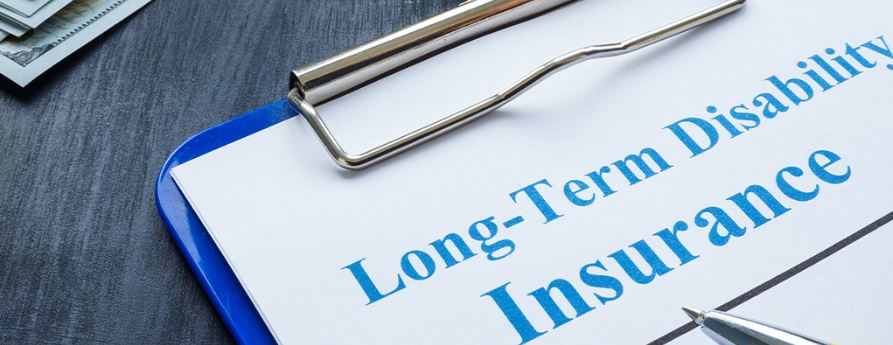Disability insurance is a vital component of financial planning because it offers vital protection in the event that a sickness or injury keeps you from working. Making educated decisions to guarantee financial stability during unforeseen life occurrences can be facilitated by having a thorough understanding of the various forms of disability coverage. In order to assist you in selecting the best policy for your needs, this thorough guide will examine the many forms of disability coverage, their advantages, and how they operate.
What is Disability Coverage?
Disability coverage is a kind of insurance that pays those who are unable to work because of a debilitating condition income replacement benefits. This insurance is intended to shield you from the financial effects of a disability, guaranteeing that even in the event that you are unable to work, you will be able to pay for your everyday needs and maintain your level of life.
Types of Disability Coverage
Disability coverage comes in a variety of forms, each of which is suited to a particular set of requirements. Among the primary kinds are:
Short-Term Disability Insurance (STD)
For a brief duration—typically a few weeks to up to a year—short-term disability insurance replaces lost income. This kind of insurance is intended to pay for transient illnesses that keep you from working for a brief period of time. Benefits often replace a portion of your income, typically between 50% and 70%, and start after a brief waiting period of one to two weeks.
Key Features
- Duration of Coverage: Several weeks to a year.
- Waiting Period: Usually between a week and two.
- Benefit Amount:Half to three quarters of your pre-disability salary.
Long-Term Disability Insurance (LTD)

Long-term disability insurance replaces income for protracted periods of time, frequently up to retirement age in the event that the disability lasts. This kind of coverage is intended to cover more severe and permanent disabilities and begins to pay after a longer waiting time, often three to six months.
Key Features
- Coverage Period: Up to retirement age in a few years.
- Waiting Time: Usually between three and six months.
- Benefit Amount:Half to three quarters of your pre-disability salary.
Social Security Disability Insurance (SSDI)
A government program called Social Security Disability Insurance (SSDI) pays benefits to people who have paid Social Security taxes and worked but are now disabled and unable to work. In order to be eligible, you need to meet the Social Security Administration’s (SSA) criteria of disability and have a suitable employment history.
Key Features
- Eligibility :It is determined by past employment history and Social Security contributions.
- Coverage Period: For the duration that the disability lasts.
- Benefit Amount:varies according to your past earnings
Supplemental Security Income (SSI)
Another government program that helps disabled people with low incomes and resources is Supplemental Security Income (SSI). SSI is need-based and does not require a job history, in contrast to SSDI.
Key Features:
- Eligibility: Determined by resources and income.
- Coverage Period: For the duration that the financial need and disability last.
- Benefit Amount:varies according to state and federal regulations.
State Disability Insurance
Certain states have their own disability insurance plans that give qualified citizens benefits for short-term disability. The eligibility, benefits, and length of coverage of these programs differ by state.
Key Features:
- Coverage Duration: Usually brief, lasting up to a year
- Benefit Amount:state-specific, usually expressed as a percentage of pre-disability income.
Employer-Sponsored Disability Insurance
Disability insurance that is funded by the employer is frequently provided as a benefit by employment. Short-term and long-term disability coverage are both possible in this. A base level of coverage is frequently offered by employer-sponsored plans, with the opportunity to purchase more coverage.
Private Disability Insurance
An insurance firm can be approached individually to acquire private disability insurance. With this kind of coverage, you can adjust the policy’s benefit amount, waiting period, and length of coverage to suit your unique requirements.
Choosing the Right Disability Coverage
A number of considerations must be made while choosing the appropriate disability coverage, such as your financial commitments, current coverage, and income requirements. You can select the appropriate policy by following these important steps:
Assess Your Needs
Calculate the amount of money you would need to replenish in the event that you were unable to work. Think about the costs you incur each month for housing, utilities, food, and other necessities. It’s crucial to take into consideration any savings or additional revenue streams that may exist.
Evaluate Existing Coverage
Examine any current disability coverage you may have, such as state-sponsored plans or employer-sponsored policies. Recognise the advantages and restrictions of your current coverage will assist you in determining any gaps that require filling.
Compare Policies
Examine and contrast various disability insurance plans’ features, such as the payout amount, waiting time, length of coverage, and premiums. Seek for plans that provide the best possible coverage at a cost that fits your budget.
The Importance of Disability Coverage
Disability insurance acts as a safety net to guarantee that you may continue to live comfortably even in the event that you are unable to work, making it an essential part of any financial plan. Disability coverage is crucial for the following reasons:
Disability Coverage Protecting Your Income

One of your greatest strengths is your capacity for earning money. Disability coverage guards this asset by replacing your income in the event that a disability prevents you from working.
Disability Coverage Reducing Financial Stress
Financial stress can be greatly increased by a disabling illness, particularly if it prevents you from meeting your essential living needs. Disability coverage reduces this stress by guaranteeing you will have a steady income stream in an emergency.
Providing Peace of Mind
Knowing that you have disability coverage in place provides peace of mind, allowing you to focus on your recovery without worrying about your financial future.
Conclusion
Preserving your financial future requires you to choose the appropriate policy for your needs and comprehend the many forms of disability coverage. You may make sure you have the protection you need to maintain your quality of living even in the event of a disabling condition by reviewing your needs, comparing policies, evaluating existing coverage, and speaking with a financial counsellor. A complete financial plan must include disability coverage in order to give you and your loved ones the security and comfort you deserve.
We make sure the post is SEO optimized by carefully incorporating the primary keyword “disability coverage” throughout, which raises its visibility and relevancy for readers looking for information on this crucial subject.



